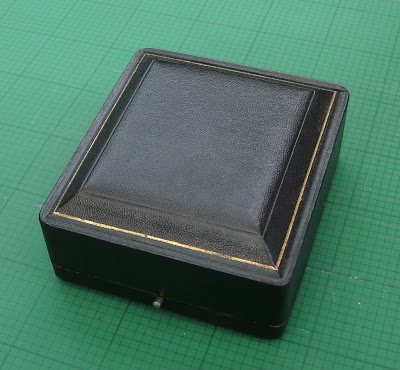Hello
The lovely Sarah from Drawn Threads (
DrawnThreads) was given a Singer 221k by a relative. She was so thrilled. She brought it to her Needles and Pins Group on Tuesday so I offered to tidy the case up for her as I had just done mine. So home it came with me.
The outside had the inevitable dings and scrapes of 60 years of use.
The inside was even worse.
Gave the outside a clean with a damp cloth making sure that I didn't get it too wet. Ideally, I wanted to do the same with the inside but didn't want to introduce any moisture inside the box as they tend to get mildew and this was already showing signs of having had it. Stuck down a few bits of peeling edges using UHO glue.
After cleaning the outside and letting it bake dry in the conservatory, the sharpie black pen was used to colour in the scratches and marks. Then two coats of black shoe polish gave its final finish. I left each coat to dry before buffing. The locks were cleaned with a wet cotton bud and Bar Keepers Friend.
The inside was hoovered out and then wiped with a clean dry cloth. Then used one coat of shoe polish to tidy it up, again making sure it was fully dry before buffing. Not perfect but loads better than it was.
I then turned my attention to the machine, giving it a service, clean and polish. The lower tension wasn't quite right so I reset that. It needed a new belt which Sarah has ordered along with 4 new rubber feet. Added a new spool pin felt.
As a surprise, I made a handy draw string bag to keep the dangling wire and plug in so the paintwork doesn't get scratched.
The flip up bed was catching on the foot screw so I used a little clear bumper stop stuck on the screw so it wouldn't chip the paintwork.
Its hardly visible.
The machine came up quite well.
All tucked up safely.
Sarah had an original key so added a pretty fob for it.
She has been through the mill recently and works so hard with her business, she deserves a treat
Cheers
Sharon




















